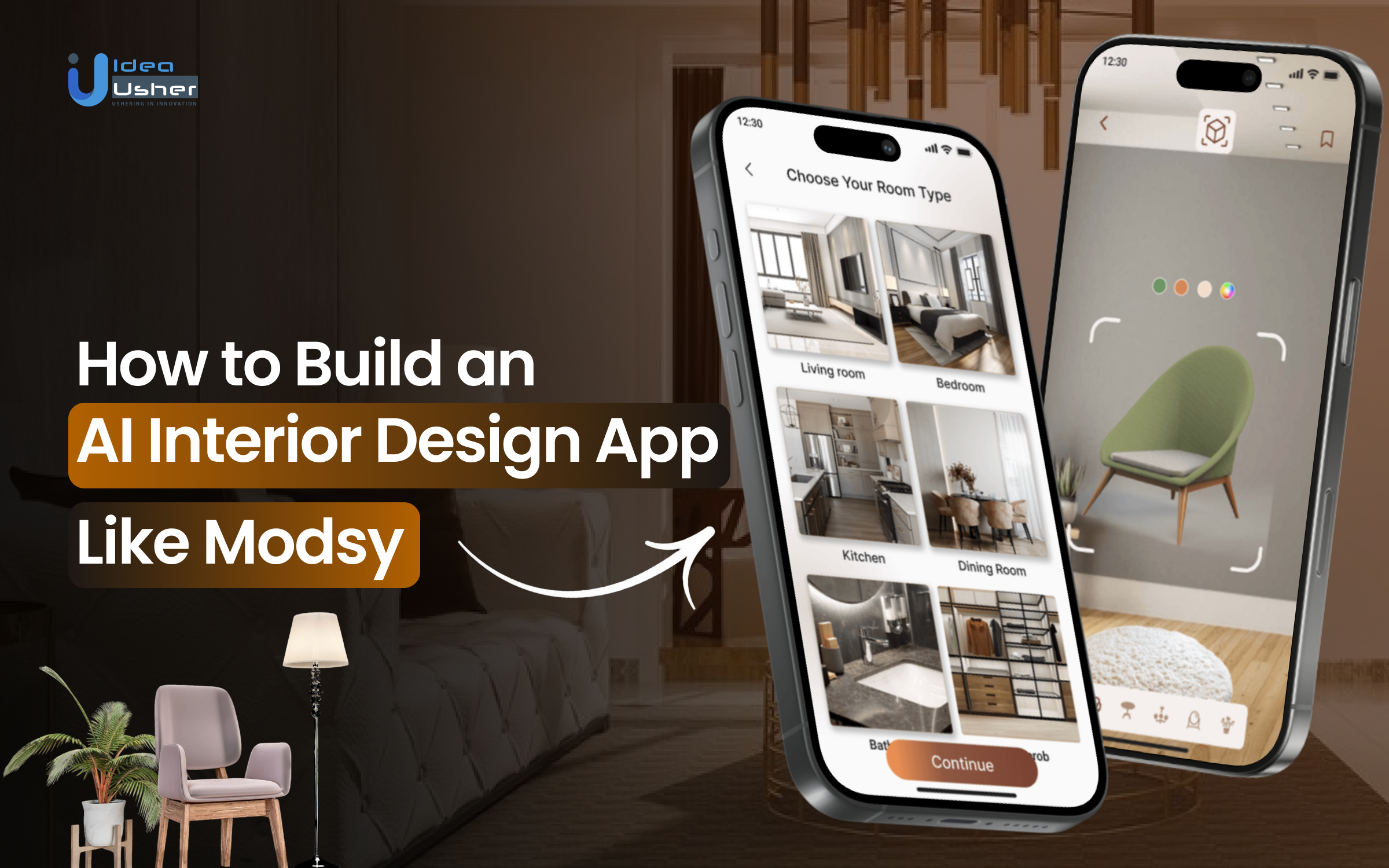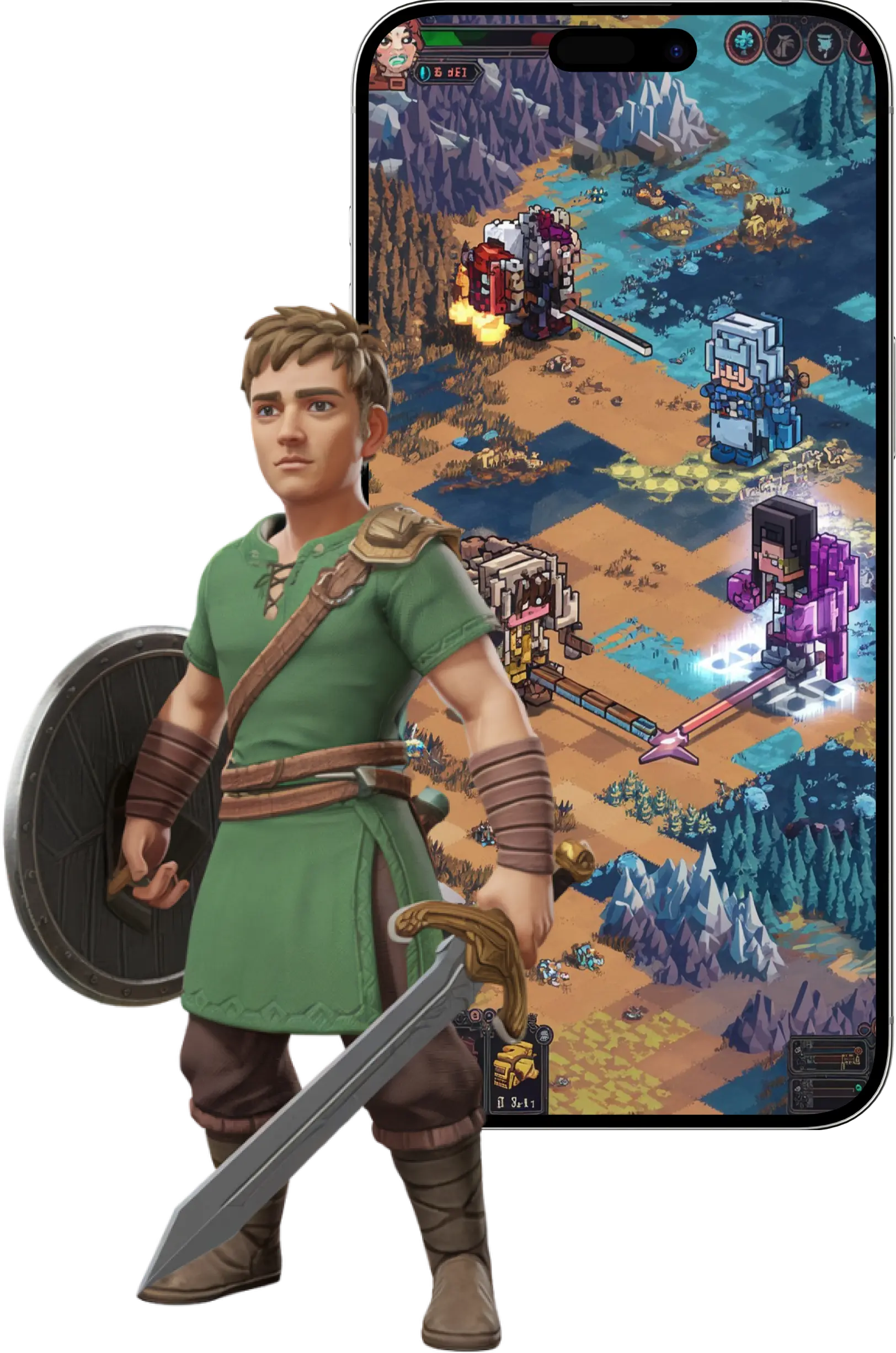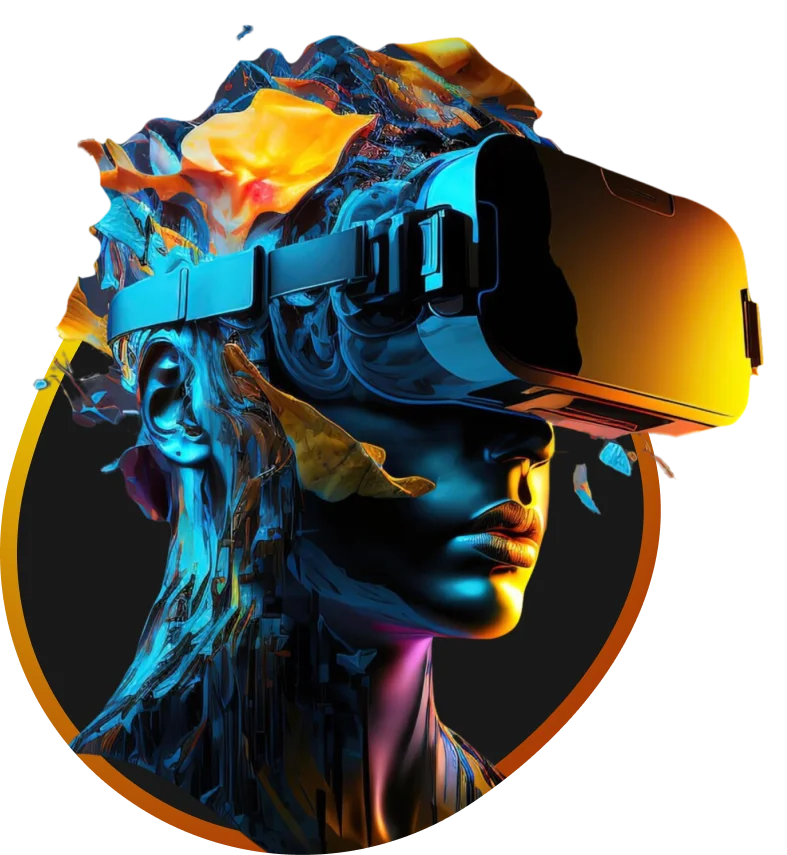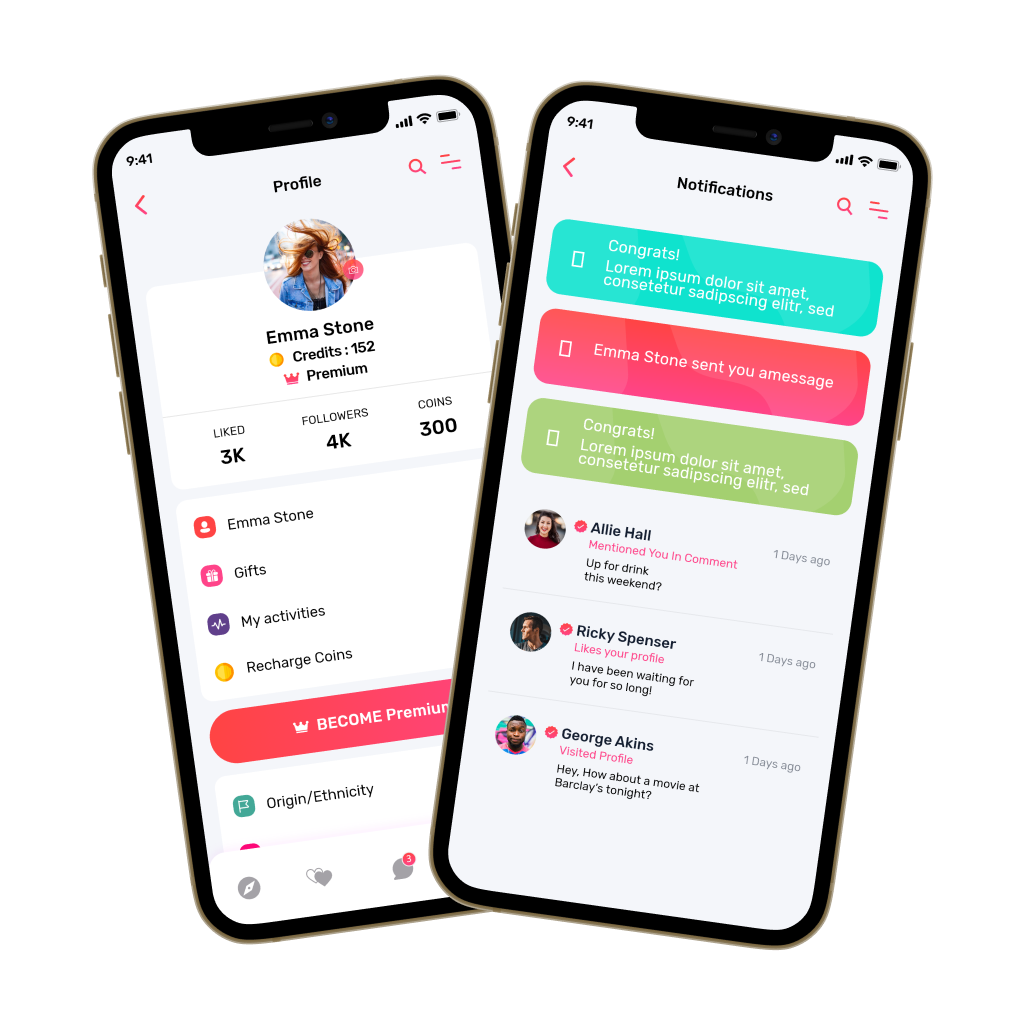AI-powered interior design apps have quickly become a popular tool for home decor enthusiasts. Apps like Modsy are making it easier than ever for people to bring their dream spaces to life by offering virtual design consultations and personalized recommendations. With just a few clicks, users can experiment with different styles, layouts, and furniture pieces, all from the comfort of their homes.
As more people look for ways to decorate their homes on their own terms, the demand for these virtual design tools is growing fast. Not only do these apps help users save time and money, but they also create opportunities for businesses to earn through subscription models, partnerships with furniture brands, and premium services.
This blog will walk you through the essential steps to build a similar app, positioning your business at the cutting edge of the interior design industry.
Overview of the Modsy App
Modsy is an AI-powered interior design app that lets you redesign and visualize your space virtually. Using 3D rendering, machine learning, and professional designers, Modsy provides personalized home decor recommendations, making it easy to create your dream interior without the hassle of traditional interior design services.
Here’s how the app works,
Sign Up & Style Quiz
Users can either download the Modsy app or visit the website. The journey starts with a style quiz, where AI analyzes users’ preferences in colors, furniture styles, and budget.
Upload Your Room
Users take photos of their space (smartphones work perfectly), and input room dimensions. If users are unsure about the measurements, Modsy’s AI can help estimate them.
AI Generates a 3D Model
Modsy’s AI scans the photos and creates a digital twin of the room. The system suggests initial furniture arrangements based on algorithms designed to optimize the layout and style.
Human Designer Refines the Plan
A professional designer reviews the AI-generated layout and provides two custom design concepts based on different themes, such as modern, cozy, or eclectic.
Interactive Customization
In the 3D viewer, users can tweak layouts, swap out furniture, or adjust colors. Users can also request revisions depending on the plan they’ve selected.
Shop Directly in the App
Once users are satisfied with the design, Modsy’s AI links them to furniture and decor from retailers like Wayfair, West Elm, and others. Users can purchase items directly through the app with just one click.
Key Market Takeaways for AI Interior Design Apps
Source: VerifiedMarketResearch
AI-powered interior design apps are gaining popularity for their ability to offer cost-effective and efficient ways to visualize and customize spaces. For example, VR tools allow users to explore digital models of homes, make instant changes, and avoid costly errors in construction.
Apps like Modsy, Havenly, and HomeByMe utilize AR/VR technologies to provide detailed 3D renderings, while AI-driven platforms help streamline the design process by providing automated suggestions based on user preferences.
Plus, integration with e-commerce giants like IKEA and Wayfair makes it easy for users to go from visualizing to purchasing their dream furniture, enhancing convenience.
Strategic partnerships are further accelerating the adoption of these apps. For instance, HTC VIVE partnered with Immersion to create TrueScale, a VR app that offers a detailed home decoration experience.
Work with Ex-MAANG developers to build next-gen apps schedule your consultation now
A Perfect Time to Invest in Developing an AI Interior Design App
Starting an AI-powered interior design app like Modsy is a fantastic business idea, especially with the growing trend of people looking for personalized and convenient home design solutions. With more people shopping online and looking for virtual consultations, AI-driven apps are becoming a popular choice for homeowners and designers alike.
These apps can use AI to offer customized design suggestions, automate parts of the design process, and even integrate AR to help users visualize their spaces. This tech-driven convenience makes it much easier for people to create beautiful, personalized interiors without the need for professional designers.
Two great examples of AI-powered interior design apps are Modsy and Havenly. Modsy, which combines AI with 3D visualization to create virtual room designs, generated about $20 million in revenue in 2020.
Another app, Havenly, offers personalized design services and raised $35 million in funding in 2020, showing strong growth.
As the home decor industry continues to embrace digital transformation, an AI interior design app has a lot of potential to thrive and become very profitable!
Business Model of the Modsy App
Modsy is an AI-driven interior design platform that blends innovative technology with personalized home styling. The platform has successfully developed a business model based on subscription revenue, e-commerce partnerships, and premium design services, making it scalable and profitable.
Design Package Subscriptions (Primary Revenue Source)
Modsy offers a range of design packages that cater to different user needs, providing flexible options for various budgets:
Basic Package ($79)
This entry-level package includes AI-generated design suggestions based on photos uploaded by users. It’s an affordable option for those seeking quick, budget-friendly design guidance without the need for professional input.
Premium Package ($299+)
This package provides a more personalized experience, including 1:1 collaboration with professional designers. Users benefit from a tailored design process, which includes deeper customization and expert insights.
Pro Package (Custom Pricing)
Designed for real estate agents, interior designers, and businesses requiring large-scale redesigns or multiple-room projects, this package offers custom pricing for high-volume needs.
E-Commerce Commission & Affiliate Revenue
Through partnerships with well-known furniture retailers such as Wayfair, Crate & Barrel, and West Elm, Modsy earns revenue from both commissions and affiliate links:
- Commission: Modsy receives a commission of 10–20% on furniture sales made through its platform. This incentivizes users to purchase furniture directly from the app while adding to the platform’s revenue.
- Affiliate Links: By incorporating affiliate links, Modsy earns a share of sales even when users don’t purchase right away. This creates additional passive income for the platform.
Estimated Impact: Approximately 30% of Modsy’s revenue stems from e-commerce, with users typically spending 2–3 times more when purchasing furniture via the platform, thanks to the confidence gained from virtual staging and detailed 3D previews.
White-Label & B2B Services
Modsy has successfully expanded beyond individual users by offering services that cater to businesses, adding an important B2B element to the revenue model:
Virtual Staging
Real estate agents use Modsy’s virtual staging for property listings, which can cost between $500 and $2,000 per property. This service enables sellers to showcase properties in the best light, enhancing buyer interest.
Product Placement
Furniture brands pay to have their products featured within Modsy’s design suggestions, generating additional income through sponsored placements. This allows furniture companies to reach a highly engaged audience actively looking for design inspiration.
Modsy’s Financial Performance & Growth
Modsy has experienced significant growth and scalability, achieving impressive financial performance over the years:
- Annual Revenue: Modsy’s revenue is estimated to be around $25M annually, demonstrating the success of its business model.
- Gross Margin: Modsy enjoys a high gross margin of approximately 60–70%, largely due to its digital-first approach, which eliminates the need for physical storefronts or costly design services.
- Customer Acquisition Cost: Estimated at $150–200, largely driven by digital marketing efforts, paid advertising, and strategic partnerships.
- Lifetime Value: With an estimated LTV of $500+, Modsy has a strong repeat user base. Many users return to the platform for additional rooms or furniture purchases, helping to sustain long-term revenue growth.
Modsy’s Funding & Valuation
Modsy has attracted significant investment to fuel its growth, raising over $72.7 million across multiple funding rounds:
- Series A ($8M, 2016): Funded by GV (Google Ventures) and Norwest Venture Partners.
- Series B ($23M, 2018): Backed by Advance Ventures and Comcast Ventures.
- Series C ($37M, 2020): Supported by TCG and Birchmere Ventures.
Peak Valuation: Modsy reached a valuation of approximately $200M in 2020, highlighting investor confidence in the platform’s potential.
Why Investors Backed Modsy
Investors were drawn to Modsy for several compelling reasons:
- AI + E-Commerce Synergy: The platform’s ability to generate high-margin revenue through e-commerce made it an attractive investment. The combination of AI and e-commerce not only enhances the user experience but also creates a sustainable revenue stream.
- Scalability: Modsy’s digital-first approach allows it to scale quickly without being limited by physical stores or geography, making it easier to expand its reach globally.
- Market Trend: The online interior design space grew significantly during the pandemic, with a 40% increase in the market year-over-year. This trend made Modsy an appealing investment opportunity as demand for online design services surged.
Could Modsy’s Model Work for Your AI Interior Design App?
If you’re looking to create an AI-powered interior design app, there are several lessons and insights you can incorporate into your own business model:
- Freemium Tiers: Offer free basic design tools to attract users, then upsell premium features like personalized consultations or advanced customization. This creates a pathway for users to experience the app before committing to paid services.
- E-Commerce Integrations: Partner with furniture retailers to integrate affiliate revenue streams, earning commissions from product recommendations and purchases made through the app.
- B2B Services: Explore opportunities for virtual staging services for real estate agents or product placement for furniture brands. These services can provide additional revenue and help diversify the platform’s income sources.
Key Features of an AI Interior Design App Like Modsy
Here are the key features of an AI design app like Modsy,
1. AI-Powered Personalized Design Suggestions
The app analyzes user-uploaded photos and preferences to generate design ideas that match individual tastes. It recommends color schemes, furniture, and layouts, ensuring a personalized and efficient design process.
2. Realistic 3D Visualization and Photorealistic Rendering
Users can preview their redesigned rooms with lifelike 3D models or photorealistic renderings. This feature helps visualize furniture arrangements and decor choices, making it easier to decide on the final look before making physical changes.
3. Intelligent Space Planning and Room Measurement
By measuring room dimensions from photos or scans, the app generates precise floor plans. It then suggests the best furniture placements, ensuring both functionality and visual appeal for a well-organized space.
4. Style and Mood Board Creation
Users can create mood boards by selecting colors, textures, and design elements. The app helps refine the design by suggesting complementary styles, providing clarity and inspiration before finalizing any decisions.
5. AI-Driven Furniture & Decor Recommendations with Integrated Shopping
The app suggests furniture and decor that fit the user’s style, room size, and budget. Many platforms allow users to purchase items directly through the app, streamlining the process from design inspiration to actual purchase.
Development Steps for an AI Interior Design App Like Modsy
Here are the steps to develop an AI interior design app like Modsy,
1. Market Research & Audience Analysis
Before diving into development, it’s important to understand who will use your app. Focus on what your target audience needs, their preferences, and the challenges they face with interior design. Conduct surveys and interviews to gather insights. Analyzing competitors will also help you understand what’s working and what’s not in the market.
2. Define Core Features and AI Capabilities
Identify the features that will set your app apart. Key functionalities should include room scanning, AI-powered design recommendations, 3D visualizations, and an easy-to-navigate shopping experience. These features should be designed to enhance the user’s journey, providing personalized, intuitive, and engaging solutions.
3. Choose the Right Technology Stack
Choosing the right technologies for building your app is crucial for scalability and performance. Select AI tools like TensorFlow or PyTorch, which can power the personalized design features. For 3D rendering, consider Unity or WebGL. A solid backend infrastructure (Node.js, Django) paired with cloud services will ensure smooth app performance and growth.
4. AI Training & Machine Learning Model Development
AI plays a central role in personalizing the design experience. To achieve this, train your machine learning models on diverse data, including room layouts, furniture preferences, and design styles. Your AI should be capable of analyzing user input, suggesting furniture, and creating optimized room layouts based on user preferences.
5. Develop 3D Visualization & AR Capabilities
Integrating 3D visualization and AR capabilities will bring designs to life. Users should be able to interact with virtual designs and see how different furniture pieces will look in their actual space. Utilize AR tools like ARKit and ARCore to allow users to experience their designs in real-time.
6. User Interface & User Experience Design
Your app’s design should prioritize ease of use. An intuitive UI/UX ensures users can easily access key features, like room scanning, design adjustments, and shopping. Keep the layout clean and navigation straightforward, guiding users smoothly through the design process without overwhelming them.
7. Integration with E-Commerce and Retail Partners
A major part of the app’s value lies in shopping integration. Partner with major furniture retailers like IKEA, Wayfair, or Amazon to provide users with an easy path to buy the items they see in their design. Implement a shopping cart, secure payment gateway, and affiliate links to generate revenue through sales.
8. Test and Validate AI Models
Testing is critical to ensure the AI is delivering relevant and accurate results. Run tests to see if the design suggestions match the user’s style preferences. Use feedback to refine the models and make sure the app’s AI gets better over time, delivering more personalized recommendations as it learns.
9. Launch, Marketing, and Continuous Improvement
Once the app is ready, focus on a launch strategy that targets your core audience. Use digital marketing, social media, and influencer partnerships to drive attention. Post-launch, track user feedback, fix bugs, and continuously improve the app based on how it’s used in the real world. Regular updates will keep the app relevant and engaging for users.
Cost of Developing an AI Interior Design App Like Modsy
The cost of developing an AI interior design app like Modsy varies. It depends on factors like the technology used, the features included, and how scalable the app needs to be. Understanding these components is crucial before starting the project.
| Cost Component | Description | Estimated Cost Range ($) |
| Research and Planning | Market research, feature definition, and technical specifications | 2,000 – 5,000 |
| UI/UX Design | Creating wireframes, mockups, and a user-friendly interface | 3,000 – 10,000 |
| Frontend Development | Building the user interface for iOS, Android, or web | 5,000 – 20,000 (per platform) |
| Backend Development | Developing the server-side logic, APIs, and database | 5,000 – 20,000 |
| AI and Machine Learning | AI models for style recognition, furniture placement, and recommendations | 10,000 – 40,000 |
| App Features | Additional functionalities affecting cost | |
| – 2D Visualization | Basic room visualization | 2,000 – 5,000 |
| – 3D Visualization | Advanced 3D room rendering | 10,000 – 25,000 |
| – AR Integration | Augmented reality for interactive room design | 5,000 – 15,000 |
| – E-commerce Integration | Integration with furniture stores for purchasing | 3,000 – 8,000 |
| Testing & Quality Assurance | Functional, usability, and performance testing | 3,000 – 10,000 |
| Data Acquisition | Gathering and processing data for AI training | 2,000 – 8,000 |
Cost Estimates: $10,000 – $50,000
These figures are simply an early estimate to help with planning. Actual development costs can shift based on the depth of features, level of AI integration, and how the project evolves during execution.
Factors Affecting the Cost of Developing an Interior Design App Like Modsy
Building an AI-powered interior design app like Modsy comes with unique challenges that drive up costs. It requires expertise in areas like 3D modeling, AI algorithms, and AR integration. Here’s a quick breakdown of the key cost factors:
3D Asset Creation and Management
Creating high-quality 3D models and realistic renderings of furniture and décor can be costly. This requires skilled designers and powerful software.
AI Model Training Data
Gathering and labeling a large, diverse dataset for training AI models is essential. The better the data, the more accurate the AI becomes, but it’s time-consuming and expensive.
AI Algorithm Complexity
Developing algorithms for tasks like room dimension estimation, furniture placement, and style recommendations requires expert AI engineers and computational resources.
AR Integration Precision
Integrating accurate and realistic AR for virtual furniture placement in real-world spaces requires advanced technology in computer vision and sensor fusion, increasing the development cost.
How Modsy Uses AI in their App?
Here’s how Modsy uses AI in its application,
1. AI-powered room scanning & 3D Modeling
The journey begins with users uploading photos of their rooms. Modsy’s AI uses cutting-edge computer vision and spatial recognition technology to:
- Detect room dimensions: Automatically detects and measures the walls, windows, doors, and other architectural features.
- Create a precise 3D replica: Once the dimensions are identified, the AI creates an accurate 3D model of the room, virtually removing existing furniture.
- Identify existing furniture: If the user has furniture they want to keep, the AI identifies these items and integrates them into the design concept.
This streamlined process eliminates the need for time-consuming manual measurements, making it easier and faster to visualize a space’s potential.
2. Smart Style Recommendations
After completing a quick style quiz, Modsy’s AI gets to work.
- Analyze preferences: The AI analyzes the user’s answers about color preferences, furniture styles, and budget to understand their taste and lifestyle.
- Match decor trends: The system taps into the latest decor trends and suggests designs that align with the user’s style.
- Generate mood boards: It then generates mood boards with various themes (e.g., modern, bohemian, minimalist) so users can see different visual directions for their space.
The AI is constantly learning from millions of data points, so it can make highly accurate style recommendations, helping users discover a look they’ll love.
3. Virtual Furniture Placement & Space Planning
Modsy’s AI also excels in space planning. Using augmented reality and machine learning, it:
- Recommends layouts: Based on the room’s dimensions and user preferences, the best possible furniture layout is suggested.
- Simulates fit and flow: The AI simulates how different furniture pieces fit in the space, ensuring that everything fits together perfectly without overcrowding or awkward spacing.
- Real-time adjustments: Users can easily swap furniture or adjust layouts in the 3D viewer. If something isn’t quite right, the AI instantly updates the design.
This helps users avoid costly mistakes by letting them visualize how furniture will actually look and function in their space before making any purchases.
4. AI-Curated Product Suggestions
One of Modsy’s standout features is how it simplifies the shopping process:
- Scan thousands of products: Modsy’s AI scans a vast catalog of products from major retailers like Wayfair, West Elm, and Target, finding the best options based on the user’s style and budget.
- Suggest alternatives: If an item is out of stock or over budget, the AI automatically suggests alternatives that align with the original vision.
- Track pricing trends: The AI keeps an eye on pricing trends and can even highlight special deals or sales, ensuring users get the best value for their money.
Users are provided with a personalized shopping list that’s fully integrated into the app, making it easy to purchase everything in just a few clicks.
5. Human + AI Collaboration for Refined Designs
While AI handles the heavy lifting of generating layouts, recommendations, and suggestions, Modsy’s human designers are still crucial in refining the final design:
- Polish AI-generated layouts: The designers ensure the AI-generated layouts are not just functional but also aesthetically pleasing. They adjust designs for practical flow and proportion.
- Expert revisions: Designers offer additional insights, making revisions based on user feedback to ensure the design works well with their lifestyle.
- Attention to detail: Lighting, textures, and proportions are carefully considered by the designers, ensuring the final render looks realistic and cohesive.
Trends to Follow for Developing an AI Interior Design App Like Modsy
As the interior design industry evolves, developing an AI-powered app like Modsy requires keeping up with key trends that are transforming the space. Here are the trends you should focus on to create a competitive and innovative design app.
1. Hyper-Personalized Design Recommendations
In today’s interior design apps, personalization is a game-changer. Leading platforms like Modsy, Havenly, and RoOomy use AI to deliver design suggestions tailored to individual preferences. These apps:
- Analyze user behavior to recommend furniture that suits color schemes, textures, and spatial constraints.
- Adapt over time, learning from user interactions to refine suggestions and introduce new styles as tastes evolve.
- Offer AI Stylist profiles that continuously refine design options with each user interaction.
Why it matters: Consumers want experiences that feel personal and unique. AI-driven apps are able to provide this by learning from users’ interactions, offering them recommendations that reflect their evolving design preferences.
2. Augmented Reality for Real-Time Visualization
Augmented Reality is becoming an essential feature in interior design apps. Platforms like IKEA Place, Houzz, and Modsy are using AR to help users visualize their designs in real-time. This allows users to:
- See furniture in their space through smartphone cameras, using tools like ARKit/ARCore.
- Make real-time adjustments to layouts, colors, and furniture placement.
- Prevent buyer’s remorse by giving users an accurate preview of scale, color, and style before purchasing.
Why it matters: AR bridges the gap between imagination and reality. Users can interact with their designs and make confident decisions about furniture and layout before making a purchase.
3. Sustainable & Eco-Friendly Design Solutions
As sustainability becomes a core concern, AI interior design apps like Cocoonify, Modsy’s Green Design Mode, and Ikea’s Home Planner are leading the charge toward more eco-conscious choices. These apps help users:
- Choose eco-friendly materials, such as recycled wood, low-VOC paints, and sustainable fabrics.
- Optimize layouts for energy efficiency, like maximizing natural light and reducing reliance on artificial lighting.
- Recommend sustainable furniture brands, offering users green alternatives to traditional furniture options.
Why it matters: With 68% of consumers preferring brands that prioritize sustainability, there’s a growing demand for products that are not only beautiful but also eco-friendly.
4. Virtual Reality for Immersive Design Walkthroughs
VR technology is taking interior design to the next level. Apps like DecorMatters and Planner 5D use VR to offer users a fully immersive experience. These platforms:
- Provide 360° walkthroughs of designs, letting users explore spaces from every angle.
- Allow virtual staging for real estate and rental properties, making it easier to visualize spaces without physical changes.
- Enable collaborative design sessions, where users and professionals can meet in a virtual environment to finalize design details.
Why it matters: VR makes the design process more engaging and interactive. Users can truly experience their space before any changes are made, which is particularly beneficial for high-end interior designers and real estate developers.
5. Smart Home Integration for a Seamless Experience
Interior design apps are increasingly syncing with smart home devices, making it possible to control both aesthetics and functionality. Apps like Havenly, RoomGPT, and Homelab are leading the way by:
- Adjusting lighting and thermostats to set the perfect mood in a room.
- Recommending IoT-compatible furniture, such as smart beds or automated curtains, that enhance the overall living experience.
- Creating mood-based automations, where users can change the ambiance for specific activities, such as dimming the lights for movie night or adjusting temperature settings for relaxation.
For example, Samsung’s SmartThings works with interior design apps to create harmony between technology and design, making spaces smarter and more user-friendly.
Why it matters: As homes become more connected, integrating smart home capabilities into design apps enhances the convenience and usability of living spaces, allowing users to personalize their environment with ease.
6. Data-Driven Design Insights & Trend Forecasting
Data plays a huge role in the future of design. Apps like Modsy, Houzz, and RoOomy are using data to forecast trends, help users stay on top of the latest styles, and make more informed decisions. These apps:
- Track emerging trends in colors, furniture, and materials.
- Offer “Most Popular in Your Area” suggestions based on user behavior in specific locations.
- Help retailers predict demand by analyzing design trends and consumer preferences, creating a new revenue stream by monetizing this data.
Business benefit: Furniture brands and retailers can use these insights to ensure they are stocking up on products that will resonate with consumers, which in turn leads to better sales and customer satisfaction.
7. Cloud & IoT for Accessibility & Automation
Cloud technology and IoT are revolutionizing how design apps operate. Platforms like Planner 5D, Roomstyler, and Modsy are integrating these technologies to enhance functionality:
- Cloud integration enables users to access and edit design projects from any device, ensuring that they can work on their designs anytime, anywhere.
- IoT devices collect real-time data about the room, allowing the app to make automatic suggestions for layout adjustments or recommend more durable materials based on environmental factors (e.g., high-traffic areas).
- AI-powered automation offers suggestions for tweaks or updates to designs without requiring user input, streamlining the process.
Conclusion
Building an AI interior design app like Modsy can change the way people think about home styling. By using AI, machine learning, and 3D modeling, businesses can offer personalized design recommendations at scale. This not only saves time and money but also makes design accessible to a wider audience. For businesses, a similar app can create several ways to earn. You could use subscription models, in-app purchases, or even partnerships with furniture brands.
Looking to Develop an AI Interior Design App Like Modsy?
At Idea Usher, we specialize in bringing your vision to life with cutting-edge AI technology and user-friendly design. With over 500,000 hours of coding experience and a team of ex-MAANG/FAANG developers, we ensure top-notch quality and performance for your app. Whether you’re looking to create personalized design recommendations or offer 3D visualizations, we’ve got you covered.
Check out our latest projects to see the kind of work we can do for you, and let’s build something amazing together!
Work with Ex-MAANG developers to build next-gen apps schedule your consultation now
FAQs
A1: To develop an AI interior design app, you start by defining the app’s core features, such as personalized design suggestions, 3D modeling, and virtual furniture placement. After that, choose the right technologies like AI and machine learning, and work with experienced developers to bring the concept to life. Lastly, ensure the app is easy to use and integrates smoothly with e-commerce platforms or furniture brands.
A2: The cost of developing an AI interior design app depends on the complexity of the features you want to include. Elements like design, AI integration, platform choice, and development time all play a role in determining the overall price. It’s best to work with a development team to get a more accurate estimate based on your specific needs.
A3: The main features of an AI interior design app typically include personalized design suggestions, 3D visualization, augmented reality for virtual furniture placement, style quizzes to understand user preferences, and integration with furniture e-commerce platforms. The idea is to give users a comprehensive and interactive way to design their spaces.
A4: An AI interior design app can make money through several methods. This might include offering premium features via subscriptions, charging for virtual consultations or expert advice, partnering with furniture brands for affiliate sales, and providing in-app purchases for additional design tools or templates.




















